4 Dec 1998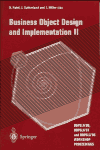 New
Book on Business Objects
New
Book on Business Objects
Patel , D. , Sutherland , J. , Miller , J. , (Eds.)
Business
Object Design and Implementation II. Springer, ISBN: 1-85233-108-9, 1998.
Sutherland , J.V. , Patel , D. , Casanave , C. ,
Miller , J. , Hollowell , G. , (Eds.) Business
Object Design and Implementation. ISBN: 3-540-76096-2, 1997.
- I have a few copies I will FedEx to you at my
cost - $35.50 - Specify which volume and send
email request.
3 Dec 1998 - REA Paper
Adaptive Framework
for the REA Accounting Model by Hiroaki Nakamura and Ralph E. Johnson, University
of Illinois at Urbana-Champaign
Abstract: Business applications
must be able to adapt to a changing business environment, to access large amount
of data and to be efficient. A framework for business applications must also be
reusable and provide uniform access to information. We have developed a framework
based on the REA accounting model that meets these requirements. It uses the active
object-model and composite query technique for adaptability, the Interpreter pattern
and the integrated query system for information uniformity, and incremental computation
for performance. Each idea in our framework can be applied to many other business-object
implementations.
29 October 1998
20 October 1998
OOPSLA'98 Workshop 8
Business Object Component Design
and Implementation IV:
From Business Objects to Complex
Adaptive Systems
OOPSLA
97-98 Proceedings Published by Springer
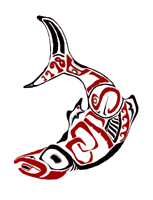
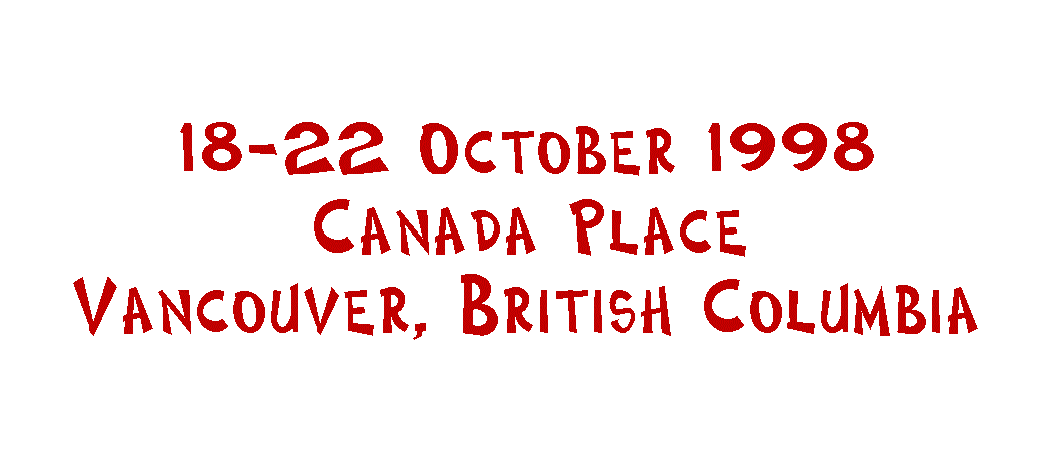
(Click
image above for conference information and registration.)
16 Oct 1998 - Position Papers
Spottiswoode updates his paper
and provides final version.
Abstract: This paper describes
the Thinking Things project which is in the design phase at the moment.
Thinking Things is technology for creating the World-Wide Mind - an Internet-based
object-oriented knowledge representation and deployment environment. Thinking
Things (T2) are active objects which are modeling real things - from absolutely
abstract notion and concept up to the most concrete things. The object
model of T2 supports representation of different qualitative properties
and aspects of real concepts and things. Active communication of T2 via
Internet enables sharing, extension and modification of this knowledge.
Interconnected and interoperating Thinking Things as units of knowledge
form together a World-Wide Mind (WWM), which, at the beginning, will be
able to learn from users (just like small kids), and then publish and share
world-wide what it has already learned. This shared knowledge may be reused,
extended, modified or negated by anybody with access to Internet.
Abstract: This paper will describe
the experience and history of introducing Business Objects into large organization.
The purpose of this paper is to illustrate the history or evolution of
the transition process, so that the process of the transition is documented
and shared in the among the OOPSLA Workshop participants. The road of establishing
the Business Objects as a best practice in a large insurance company, which
has a tremendous investment in a legacy code and which has had problem
adopting a new technologies, has been a challenging one. We have experimented
with variety of new concepts that would help us to transition more quickly
and less painfully to the new architecture which is required. Business
Objects is one of these tools or concepts, however we have had a few others
before we have reached the BO.
Submitted to: OOPSLA'98 Workshop
on Modeling
Dynamic/Emergent Distributed Object Systems (This background paper
for the Business Object Workshop will provide cross feed to the Workshop
focussed on complex adaptive systems.)
Abstract: Concepts in
Complex Adaptive Systems (cas) research are relevant to the development
of enterprise business object component systems. Many mathematical and
computing models have been developed for cas in recent years [CPM
94] and much of this work can be applied, at least conceptually, to
Business Object Component Architectures now emerging as the mechanism of
choice for building large distributed object systems.
Abstract: Considering units
of work as autonomous goal-driven agents emphasizes the connection between
business objects and complex adaptive systems. Assigning goals to work
objects, in addition to the usual attributes, behaviors and rules, allows
them to act as adaptive agents. Applying user-modifiable conditions to
their actions keeps the agents’ goal-driven behavior within limits dictated
by volatile consumer markets, changing corporate direction, new legislative
rulings, etc. This paper considers how complex adaptive system research
might be applied when building business objects in support of a non-deterministic
business environment. The sample case study involves the evolution of a
traditional object-oriented application into a more flexible agent-driven
system. It is a work in progress whose success cannot be evaluated at the
current time, but the approach seems promising and would benefit from scrutiny
by the practitioners at the workshop.
Abstract: OMG
is in the final stages of defining the Workflow Management Facility. This
facility represents an important building block for the emerging OMG Business
Component Framework; it provides a framework for workflow business components
which enable realization business processes in a business component environment.
Workflow components take care of the overall process logic of a business
process, enable monitoring of workflow execution and support flexible combination
of reusable business components into workflow applications. We will describe
the key concepts of the Workflow Management Facility specification, discuss
implementation options for this facility and explain how to build distributed
workflow applications within the framework of such a facility. In addition,
we will discuss future extensions to the workflow standard in the areas
of resource management and workflow process definition.
Abstract: Automated workflow
management systems (WFMS) between cooperating but autonomous groups can
fail because autonomous workgroups are free to change the activities that
constitute their task, disrupting coordination between systems. We have
spent several years constructing and validating a model of trigger-based
(process state based) coordination that is more robust than current WFMS
implementations under conditions of unilateral process change. We believe
the research has implications for the design of inter-operating software
systems outside the restricted domain of WFMS, specifically for the development
of enterprise business object component systems. In this paper we briefly
describe an intentional definition of workflow and the interpretation of
that definition for maintaining coordination of a composite system in which
components autonomously evolve.
Kitty Hung, Tony Simons, Srba Cvetkovic
Department of Computer Science, The University
of Sheffield
Abstract: It is widely
recognised that one of the current problems in the software industry is
the communication gap between the business end users and the software developers.
This gap tends to limit the software developers’ knowledge in the business
in terms of requirements, strategies and operations. As a result, the software
delivered cannot meet the expectation from the business thus business end
users find it difficult to justify the return of investment from software.
This position paper presents a Dynamic Business Object Architecture (DBOA)
with an aim to fill this gap. It is believed that the bridging of the communication
gap would enable software to be more supportive not only to the business
requirements but also to organisations in implementing their business strategies
and to achieve their ultimate business goals.
Abstract: Unified Modeling
Language (UML) defines a standard notation for object-oriented systems.
Using UML enhances communication between domain experts, workflow specialists,
software designers and other professionals with different backgrounds.
UML can be used on a general level, which is intuitive for the users of
workflow systems. In spite of this, UML symbols also have defined semantics,
which means that the visual workflow description can be used as a software
specification. This position paper explains how to use UML for specification
of workflow management systems, how to trace the description of business
processes to the object-oriented software design and how to structure the
project repository with UML deliverables.
Abstract: This paper describes
how the concepts described at OOPSLA ‘97 (Business Object Management Architecture)
have been extended and refined using ideas drawn from complex adaptive
systems. The paper proposes that traditional hierarchical enterprises that
rely on command and control based on central authority will be replaced
by networks of organizations that coordinate their work through contracts.
Software components to support such organizations are illustrated using
UML.
Abstract: Recently, the business
community discovered the importance of business process engineering, and
the object-oriented community has put much emphasis on the structuring
of business applications, often in the context of client/server computing.
However, there is a gap between the two efforts. Our claim is that state
of the art business application structures and frameworks do not represent
business procedures adequately. Business procedures are not modeled naturally,
i.e. in principally the same way as they are described by the business
community.
A Business
Object Framework Architecture by
Hans
Albrecht Schmid, FB Informatik, University of Applied Sciences, Konstanz,
Germany, Matthias Riebisch, Deutsche Post AG, Duesseldorf, Germany, Torsten
Heverhagen, Informatik, University Essen, Germany, Harald Liessmann, Wirtschaftsinformatik,
University Erlangen-Nuernberg, Germany
Abstract: We advocate a 5-layer
architecture for business object frameworks with the layers: presentation,
business process, business entity, data access, and data storage, instead
of the more common 3-layer architecture, and give reasons why the 5 layers
are required. We have collected and list, for each of the layers, the responsibilities
it must fulfill and problems which may arise, together with a reasoning.
Working with Business
Objects: A Case Study by W. Hordijk, S. Molterer, B. Paech, Ch. Salzmann,
Institut für Informatik, Technische Universität München
Abstract: In this short paper
we report on the first steps of a case study on the usage and adaptability
of business objects (BOs). This toy-world scenario is the first stage of
a study for a German automobile company to evaluate business objects especially
from the reuse perspective. Therefore we transfer a well known example
- a time-planner - from UML to CDL, realize it on the basis of IBMs SanFrancisco
and take a critical look at the resulting benefits of BOs against ordinary
OO techniques.
Customers or Parties? Purchase
Orders or Stock Flows? Should distributed business objects reproduce
traditional business applications? In other words, are we building single
or multi-party systems?
Abstract: This paper describes
the business component approach to large-scale distributed business system
development. The business component is a single unifying concept that supports
system definition and requirements and continues through deployment and
customization to subsequent system evolution. It does this with minimal
transformations across the development life-cycle, and is supported by
appropriate processes, architectures and tools. Current software component
initiatives are aimed essentially at build-time components for developers,
and fall broadly into two categories: GUI or PC/NC-oriented components,
and components aimed at enterprise object model implementation. However,
if we are to address the multi-dimensional systems development problem
for mission-critical, large-scale, multi-user, distributed business systems,
we need a component concept that addresses the entire development life-cycle.
30 May 1998 - Workshop Participant Publishes
Business Object Survey
-
Kitty Hung, Tony Simons, Tony
Rose Email: k.hung@dcs.shef.ac.uk, a.simons@dcs.shef.ac.uk, tony.rose@btrinc.com
-
Accepted at Object-Oriented Information
Systems (OOIS'98) University of Paris - Sorbonne, France, September 9-11,
1998.
-
ABSTRACT: Since the term
"Business Objects"(BOs) was first coined, little tangible evidence has
emerged to support the claim that BOs have any beneficial impact on information
systems (IS) development. A survey was therefore conducted into attitudes
to, and adoption of, BOs across a wide spectrum of IS disciplines. Results
of the survey revealed that the concept of BOs was not stable and the adoption
of BOs was still understrength.
5 March 1998 - OOPSLA'97
Workshop on Business Object Design and Implementation III. 11th Annual
Conference on Object-Oriented Programming Systems, Languages, and Applications
Addendum to the Proceedings. OOPS Messenger, ACM/SIGPLAN, 1998 (in
press).
 E-Mail
E-Mail
 Call
for Participation - due date 1 August 1998
Call
for Participation - due date 1 August 1998
The NCITS Accredited Standards Committee H7
Object Information Management and the Object Management Group Business
Object Domain Task Force (BODTF) will jointly sponsor the Third Annual
Workshop on Business Object Design and Implementation.
 Goals
of Business Object Workshop IV
Goals
of Business Object Workshop IV
-
Enhance the pattern literature on the specification,
design, and implementation of interoperable, plug and play, distributed
Business Object components.
-
Clarify the design and implementation of object-oriented
systems, particularly systems in which workflow patterns and the REA accounting
model are basic building blocks for production business systems.
-
Contribute to emerging architectures for Intranet/Internet/Extranet
applications, particularly those applications that integrate business objects,
web servers, object and relational databases, and new approaches to client
delivery of content.
-
Pursue issues developed in last years workshop
stimulated by papers on heterogeneous distributed workflow systems. Specify
business object solutions to mobile agents, process engines, and systems
that exhibit emergent behavior. Cross-fertilize business object design
concepts with experience from the field of complex adaptive systems.
-
Provide explicit experience reports on business
object systems developed and in production.
 Focus
of This Year's Workshop
Focus
of This Year's Workshop
Questions that still need answers from the 1997
Business Object Workshop:
-
How do you implement a reusable pattern? What
patterns are useful for end users?
-
How do you deal with application transactions
vs. TP transactions? Long transactions? Contracts between clients and servers?
-
How do you work with domain business object
models? And allow dynamic change?
-
How do you handle more difficult REA patterns
(the ones that make accounting interesting and useful)?
-
How do you differentiate between businesses
and their processes?
-
How would you build a BPR datablade?
-
How would you implement a real time, event driven
system with generative process planning, automated routing, and dynamically
changing roles of resources?
-
How can systems learn from one another?
-
What about hierarchies of workflows, peer to
peer workflow, workflow between organizations? Should workflow systems
be separate from or part of business object systems? Should there be a
generic workflow execution pattern that is part of every business process
object, i.e. should workflow concepts be seamlessly interwoven into all
applications? Is workflow a solution to reach a goal, or should it generate
an achievable goal using subservient workflows? What about workflow services,
particularly the level of persistent services? How would you implement
disaster response as workflow?
-
How do you implement goal directed behavior
- create value through exchange?
-
What about systems with emergent properties?
-
Who does what? How should systems be partitioned?
-
What about mobile agents, process engines, just
in time workflows?
-
How can we enable learning organizations through
building complex adaptive systems?
-
How can systems evolve through workflow by moving
through an evolutionary adaptive fitness state space?
Many of the outstanding issues in business object
design and implementation for enterprise systems, particularly heterogeneous,
distributed, systems are evolving into federated, autonomous business object
components on the Internet acting collectively to solve business problems
in an automated fashion. Frank Manola (Towards
a Web Object Model [Mano98]) describes the future construction of distributed
object systems on the Web. The result is counterintuitive. Yes there will
be CORBA, yes Java, yes ActiveX, but these will be small pieces of a global
implementation. Such systems are going to be more like stone
soup!
 Complex
Adaptive Systems
Complex
Adaptive Systems
Federated, distributed component systems are "interactive
systems" [Wegn95]. Such systems are not Turing
machines. All interactions in these systems cannot be anticipated. Therefore such
systems can never be fully tested, nor can they be fully specified.
Interactive, autonomous, business object
components will evolve independently. Some of these components will be
intelligent agents roaming the net to perform complex tasks. Workflows
in these systems must be managed in a very different manner than current
systems being standardized by the Workflow Coalition or the Object Management
Group. They will exhibit complex behaviors, catastrophic events, and chaotic
interactions. These phenomenom have been subsumed under the umbrella of
"complex adaptive systems (cas)" which are under intensive research for
use in predictive economic models (let the computer beat the stock market
or perform arbitrage) and the building of artificial life forms for the
analysis of biological systems, computer models that can independently
adapt and evolve, and "avatars" that can personally represent the creator
in an Internet chat room.
It would be useful to apply the concepts
in cas research to the development of enterprise business object component
systems. Business entities are complex adaptive systems. Automating business
processes renders the business in software, thus enterprise software systems
are a specific example of a complex adaptive system. The flexibility, adaptibility,
and reusability of these systems can determine the ability of the enterprise
to evolve and survive in the marketplace.
Holland, in his Ulm lectures at the Santa
Fe Institute [Holl95],
creates a synthesis of seven basic cas concepts, four properties (aggregation,
nonlinearity, flows, diversity) and three mechanisms (tags, internal models,
buildings blocks). These concepts can subsume and organize our discussion
of business object systems.
Aggregation (property) - there are two important
modes of aggregation in cas systems. Aggregation is a basic mechanism in
object modeling and forms identity, a fundamental object concept. Forming
components out of objects and enterprise systems from components is higher
level aggregation. More important are emergent properties such as intelligence
that evolve out of dumb subsystems. This is the basic concept in Minsky's
"Science of Mind" [Mins88]
or Hofstader's analysis of an ant colony [Hofs79].
Meta-agents (an enterprise) are formed of aggregates of agents (enterprise
systems) and exhibit emergent behaviors (revenue, profitability, cash flow,
the indices of value creation).
Tagging (mechanism) - this mechanism facilitates
the forming of aggregates, from HTML pages to the mechanisms in CORBA or
DCOM that allow interobject communication. They facilitate selective mating,
i.e. firewalls block certain tagged elements to protect the enterprise.
Thus they preserve boundaries between aggregates. They allow us to componentize
object models and enable filtering, specialization, and cooperation. They
are the mechanism behind the development of hierarchical aggregates that
exhibit emergent behaviours like an operating system.
Nonlinearity (property) - nonlinear systems
exhibit catastrophic and chaotic behaviors. Traffic flow on the Internet
is nonlinear, leading to predictions of the collapse of the network. Brownouts,
system loadings, scalability effects are often nonlinear. The arrival,
proliferation, and destruction of viruses on the Internet is a nonlinear
phenomenon that can be modeled like predator/prey interactions in biological
systems.
Flows (property) - worflows are examples
of flows in action. Message routing is a flow. Tags condition flows which
often exhibit nonlinear behaviors and emergent behaviors. Flows typically
have a multiplier effect. Money injected into the economy has an effect
out of proportion to the amount, similar to email or other message flows
on a network. The recycling effect of flows enables the rainforest, as
well as an enterprise computer ecosystem. Individual pieces evolve, die,
are replaced or reused, constantly changing the characteristics of the
enterprise. Living software is software that is constantly changing due
to flows, as rivers change their course. Dead software is eventually detritus
that is expelled from the enterprise organism.
Diversity (property) - persistence of an
individual agent depends on the ecosystem of agents that surround it, whether
the agent is an ant in the rainforest or a business object in an accounting
system. The evolution of these agents as software changes causes convergence
of system architectures. It is the basis of emergent patterns that are
so important in software development. Patterns that reappear again and
again in widely disparate environments. It is difficult to evolve a single
agent to make it more useful in an isolated context. Usefullness in business
object systems arises from interactions between diverse agents as in human
societies.
Internal models (mechanism) - the utility
of complex systems is enhanced if the system can learn from experience
and adapt its behavior. The ability of the system to develop and act on
internal models that simplify the external world is basic to this phenomenon.
It allows the system to infer the results of actions before they are taken,
and to choose actions that have productive results. The prospects for longevity
of software systems depend on this capability, just as in living systems.
Building blocks (mechanism) - reuse is dependent
on building blocks used over and over again. It is the basis of Moore's
law in hardware production. It could be the basis of dramatic improvements
in software productivity. Building blocks are the basis for generation
of internal models and are essential to the construction of adaptive enterprise
systems.
Since these seven cas building blocks have
proved useful in describing cas systems in general, they could be the basis
for a taxonomy of business object systems. High level definitions from
a business perspective can be found in "Complexity Theory: Fact-Free Science
or Business Tool [Berr98]." Submitters should read at least the first chapter
of "Hidden
Order [Holl95]." Waldrop's book, "Complexity
[Wald93]," is an excellent general introduction to cas.
 Publication
of Workshop Proceedings
Publication
of Workshop Proceedings
The 1998 Business Object Workshop papers will
be published as a book by Springer Verlag through a review and revision
process prior to the Workshop.
 Submission
Submission
-
Prospective participants are solicited to submit
a 2-3 page position paper or experience report, in HTML, Word or RTF format,
by e-mail to jeff.sutherland@computer.org,
no later than August 15, 1998. All submissions must include the full contact
information of at least one author.
-
Position papers will be placed on the Web for
review.
 Attendance
Attendance
-
Attendance to the workshop is limited to facilitate
lively discussions and the exchange of ideas. Participation will be by
invitation only, based on the organizing committee's evaluation of the
submissions. Accepted participants will be notified in September 1998.
 Background
Background
The OOPSLA Workshop on Business Object Design
and Implementation is jointly sponsored by the Accredited Standards Committee
X3H7 Object Information Management Technical Committee and the Object Management
Group (OMG) Business Object Domain Task Force for the purpose of soliciting
technical position papers relevant to the design and implementation of
Business Object systems.
The International Standards Organization (ISO)
has approved a new work item to refine and extend the current international
standard Reference Model for Open
Distributed Processing (RM-ODP). X3H7, the U.S. technical committee
for this new international work item, is tasked with the following:
-
Refine the enterprise language, explicating
the relationship of an enterprise specification of a system to other RM-ODP
viewpoint specifications of that system, so as to enable the RM-ODP to
be used for specification of object-based application architectures.
-
Ensure that the enterprise language together
with the other viewpoint languages is suitable for the specification of
a concrete application architecture to fill a specific business need.
-
Measure success with a demonstration of the
use of the RM-ODP viewpoint languages to specify a concrete application
architecture.
The Object Management Group has chartered the
BODTF to facilitate and promote:
-
the use of OMG distributed object technology
for business systems
-
commonality among vertical domain task force
standards
-
simplicity in building, using, and deploying
business objects - for application developers
-
interoperability between independently developed
business objects
-
the adoption n and use of common business object
and application component standards
And to issue requests, evaluate responses and
propose for adoption by the OMG specifications for objects, frameworks,
services and architectures applicable to a wide range of businesses.
 Organizers:
Organizers:
Secretary X3H7 Object Information Management,
liaison to X3H2 SQL Database
IDX Systems Corporation
116 Huntington Avenue
Boston, MA 02116
Phone: +1 (617) 266-0001 x2920| Fax: +1 (617)
721 1226
Chair, OMG Business Object Domain Task Force
Cory Casanave
Data Access Corporation
14000 SW 119 Ave
Miami, FL 33186-6017, USA
Phone: +1 (305) 238 0012 | Fax: +1 (305) 238
0017
Merrill Lynch Technology Strategy and Planning
World Financial Center South Tower
New York, NY 10080-6105, USA
Chair, H7 Object Information Management
Convener SC 33/WG 5 ISO ODP Enterprise Viewpoint
Chief Scientist--Objects & Models
MCI Systemhouse
12750 Center Court Drive, Suite 700
Cerritos, CA 90703-8583, USA
Phone: +1 (214) 689-7466 + 8 + 1948 #
Chair, Centre for Information and Office Systems
South Bank University
School of Computing, Information Systems &
Mathematics
103 Borough Road
London, SE1 0AA, UK
Phone: +44 0171 815 7429
 Links
Links
 References
References
[Berr98] Berreby, David. Complexity Theory:
Fact Free Science or Business Tool. Strategy and Business 10:40-50,
First Quarter, 1998.
 [Hofs79]
Hofstadter, D.R. Godel,
Escher, Bach: An Eternal Golden Braid. Vintage Books, 1989.
[Hofs79]
Hofstadter, D.R. Godel,
Escher, Bach: An Eternal Golden Braid. Vintage Books, 1989.
[Mano98] Manola, Frank. Towards
a Web Object Model. Position Paper for the OMG-DARPA-MCC Workshop
on Compositional Software Architectures. Object Services and Consulting,
Inc., 1998.
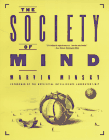 [Mins88]
Minsky, Marvin. The
Society of Mind. Simon and Schuster, 1988.
[Mins88]
Minsky, Marvin. The
Society of Mind. Simon and Schuster, 1988.
 [Holl95]
Holland, John H. Hidden
Order : How Adaptation Builds Complexity. Addison-Wesley, 1995.
[Holl95]
Holland, John H. Hidden
Order : How Adaptation Builds Complexity. Addison-Wesley, 1995.
[Odel98] Odell, James. Agents
and Beyond: A Flock is Not a Bird. Distributed Computing, April,
1998.
[OOPS95] OOPSLA'95
Workshop on Business Object Design and Implementation II. 10th Annual
Conference on Object-Oriented Programming Systems, Languages, and Applications
Addendum to the Proceedings. OOPS Messenger 6:4:170-175. ACM/SIGPLAN October,
1995.
[OOPS96] OOPSLA'96
Workshop on Business Object Design and Implementation II. 11th Annual
Conference on Object-Oriented Programming Systems, Languages, and Applications
Addendum to the Proceedings. OOPS Messenger, ACM/SIGPLAN, 1997.
[OOPS97] OOPSLA'97
Workshop on Business Object Design and Implementation III. 11th Annual
Conference on Object-Oriented Programming Systems, Languages, and Applications
Addendum to the Proceedings. OOPS Messenger, ACM/SIGPLAN, 1998 (in
press). Download PDF,
RTF,
Word
versions.
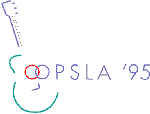 Sutherland
J., D. Patel, C. Casanave, G. Hollowell and J. Miller (Eds). Business
Object Design and Implementation: OOPSLA'95 Workshop Proceedings.
Springer, 1997.
Sutherland
J., D. Patel, C. Casanave, G. Hollowell and J. Miller (Eds). Business
Object Design and Implementation: OOPSLA'95 Workshop Proceedings.
Springer, 1997.
 [Wald93]
Waldrop, M. Mitchell. Complexity
: The Emerging Science at the Edge of Order and Chaos. Touchstone
Books, 1993.
[Wald93]
Waldrop, M. Mitchell. Complexity
: The Emerging Science at the Edge of Order and Chaos. Touchstone
Books, 1993.
[Wegn95a] Wegner, Peter. Interactive
Foundations of Object-Based Programming. IEEE Computer 28:10:70-72,
Oct 95.
[Wegn95b] Wegner, Peter. Models
and Paridigms of Interaction. OOPSLA'95 Tutorial Notes.
 1
Jan 1999 - All activities now moved to OOPSLA'99
Workshop Homepage
1
Jan 1999 - All activities now moved to OOPSLA'99
Workshop Homepage 1
Jan 1999 - All activities now moved to OOPSLA'99
Workshop Homepage
1
Jan 1999 - All activities now moved to OOPSLA'99
Workshop Homepage New
Book on Business Objects
New
Book on Business Objects 

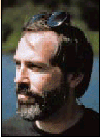 Odell,
James. Designing Agents: Using Life as a
Metaphor. Distributed
Computing, July, 1998.
Odell,
James. Designing Agents: Using Life as a
Metaphor. Distributed
Computing, July, 1998. [Hofs79]
Hofstadter, D.R. Godel,
Escher, Bach: An Eternal Golden Braid. Vintage Books, 1989.
[Hofs79]
Hofstadter, D.R. Godel,
Escher, Bach: An Eternal Golden Braid. Vintage Books, 1989.
 [Mins88]
Minsky, Marvin. The
Society of Mind. Simon and Schuster, 1988.
[Mins88]
Minsky, Marvin. The
Society of Mind. Simon and Schuster, 1988.
 [Holl95]
Holland, John H. Hidden
Order : How Adaptation Builds Complexity. Addison-Wesley, 1995.
[Holl95]
Holland, John H. Hidden
Order : How Adaptation Builds Complexity. Addison-Wesley, 1995.
 Sutherland
J., D. Patel, C. Casanave, G. Hollowell and J. Miller (Eds). Business
Object Design and Implementation: OOPSLA'95 Workshop Proceedings.
Springer, 1997.
Sutherland
J., D. Patel, C. Casanave, G. Hollowell and J. Miller (Eds). Business
Object Design and Implementation: OOPSLA'95 Workshop Proceedings.
Springer, 1997.
 [Wald93]
Waldrop, M. Mitchell. Complexity
: The Emerging Science at the Edge of Order and Chaos. Touchstone
Books, 1993.
[Wald93]
Waldrop, M. Mitchell. Complexity
: The Emerging Science at the Edge of Order and Chaos. Touchstone
Books, 1993.